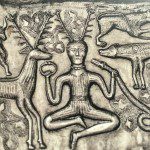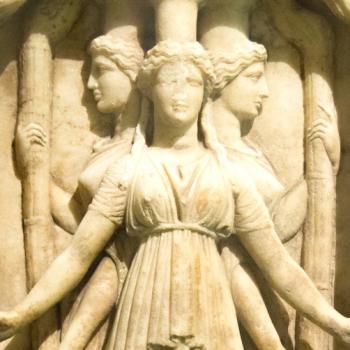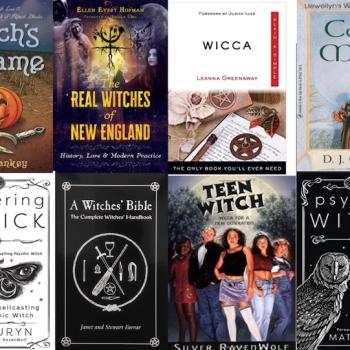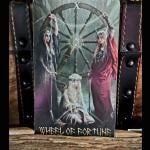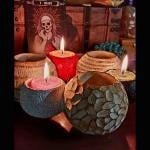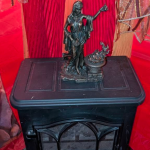Visit the Buckland Museum of Witchcraft in Cleveland, Ohio, and you’ll run into what is likely one of the very few spiral-bound notebooks in the world housed in a plexiglass case. Museum curator Steven Intermill likes to tell visitors that this prized notebook is the original Big Blue, formally known as Buckland’s Complete Book of Witchcraft. Intermill is only half-right though. While the 200-sheet green Norcom brand 5 Subject Notebook does contain some of Big Blue, it doesn’t contain all of it.
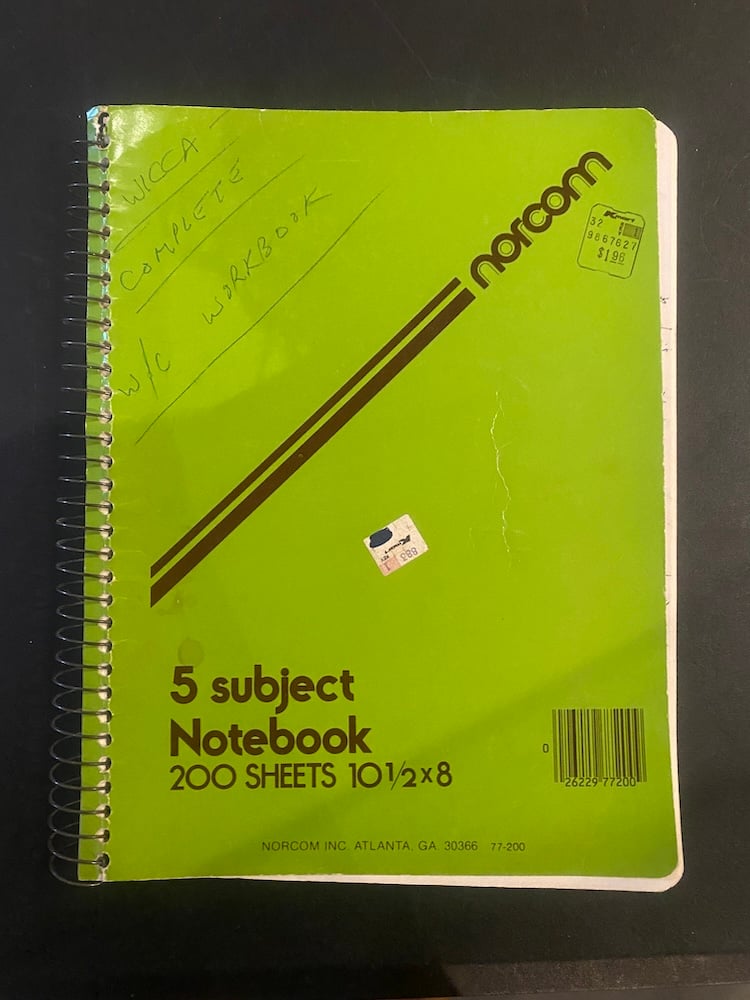
The overwhelming majority of Big Blue comes straight from Buckland’s original Seax-Wica correspondence course. In the introduction to Buckland’s Complete Book of Witchcraft, Raymond states rather matter-of-factly in the introduction that Big Blue “is based on the very successful Seax-Wica seminary course” he had previously offered.(1) But there are differences between the two projects. For Big Blue, Buckland opted not to use the rituals he had written for his Seax-Wica correspondence course, and the earliest draft of these new rituals can be found in the spiral-bound notebook on display at the Buckland Museum. There is some other tinkering around the edges in Buckland’s notebook that helped to transform the Seax-Wica course into a nondenominational Witchcraft primer, most notably the removal of the jargon that Ray created specifically for his new tradition.
As a historical document, Buckland’s Norcom notebook is remarkable for revealing just how easily the new rituals came to Ray. Much of what is in the notebook ended up in the finished text of Big Blue, most often word for word. The notebook also contains a complete outline of what would become Big Blue, with Buckland noting when he would be quoting from his original study course and from some of his other books (most notably Witchcraft from the Inside, originally published in 1970 and the revised in 1974). The questions conceived for Big Blue were also different from those included in the study course.
There are mistakes here and there in the notebook, of course. Certain words are scratched out, and in a few isolated cases entire paragraphs have wavy lines through them, indicating ideas that were, on second thought, unnecessary. Like many who write in spiral notebooks, Buckland mostly writes on the right-hand pages (writing away from the spiral binding), leaving the unused space on the left-hand pages for occasional corrections and brief sketches of ideas. As a writer myself, I was surprised to see how fully formed Ray’s ideas were for this project right from the start.
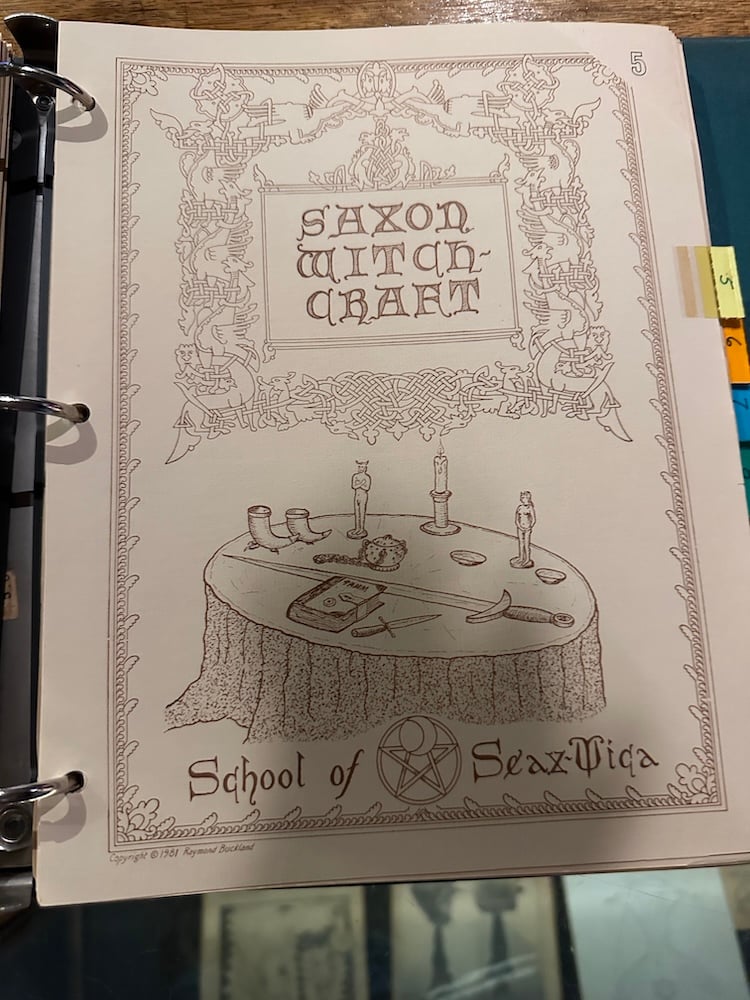
Turning the Seax-Wica correspondence course into a book feels like a rather obvious choice, but the course was quite successful financially for Buckland, and putting much of the Seax-Wica material into a book would mean shutting down the course and taking a financial hit. But it would also free Buckland from having to grade the work of his students, leaving more time for writing and other pursuits. To put it in perspective, individual lessons for the correspondence course were ten dollars each, while Big Blue’s cover price was $12.95. (Today $12.95 sounds rather inexpensive, but rounded up for inflation that’s the equivalent of about $37 in 2025. As of February 2025, Big Blue retails for $24.99.)
While in hindsight the publication of Big Blue feels like a no-brainer for Llewellyn, there were several employees at the publishing house at the time who expressed reservations. One of the criticisms was directed at the project’s workbook form:
“I think maybe we should take a look at Buckland’s Workbook and see if there’s a way of livening it up. It is more like a grade school social studies book than a workbook for adults (that is fun and involves the
person).He writes a chapter of text and then quizzes the reader. That’s no fun.
It should be more an actual workbook—ie participatory. … Not some silly quiz. … The way it is now, I think it will turn people off and certainly won’t be very useful to anyone. The examination pages could very easily be dropped altogether and no one would know it. In fact it would make it less offensive.”
The above critique was seconded by another Llewellyn employee who wrote:
“This is nothing more than Buckland’s old self-study course—blah! It’s over a decade old 1970! And most anyone who took the course is gonna be pissed when it shows up masquerading as something else.
Its [sic] tedious & silly in its present form. …
This mess is a real disappointment to me. I was looking forward to it—but this is very different than what I was lead [sic] to expect. Blech! A real ripoff, Carl—you’re gonna make a lot of Wiccans mad.”
It’s worth noting that these criticisms were directed at the earliest draft of the book, long before the book had been designed or edited. I’ve included these criticisms here because I find them personally interesting considering the book’s later success. Ultimately, the lack of enthusiasm by some at Llewellyn for what would become the Big Blue Book wasn’t shared by everyone in the company. The most important name at Llewellyn was clearly in Buckland’s (and the book’s) corner. That man was the company’s president and owner, Carl Llewellyn Weschcke (1930–2015).
Though open to other people’s critiques of potential books, Carl Weschcke had the final say on all projects. When Weschcke believed in a project, it would go forward, even if there was considerable pushback from some employees. Since acquiring Llewellyn, Weschcke had come to rely on his gut when deciding what to publish or, in some cases, not to publish.
Before the book’s publication, Weschcke was especially bullish on Big Blue, writing to Buckland that he was sensing a “new growth in Wicca” and that he believed Buckland’s book would “ride the crest of this new wave, and help broaden and sustain it.” (2) (Weschcke was correct on both counts.) He goes on to write in bold type that Buckland’s Complete “has a very big potential” and adds that “we know it will do well, and perhaps it will do super well and match PCB [Practical Candleburning Rituals] in number of copies sold.”(3)
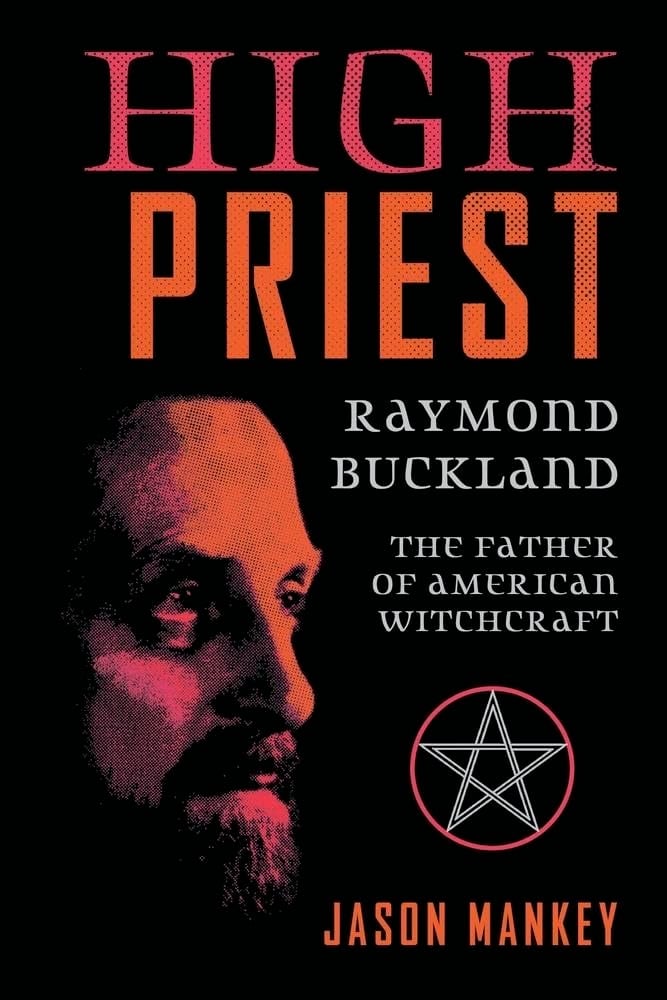
What we now know (officially) as Buckland’s Complete Book of Witchcraft was almost called something else entirely. In Ray’s book proposal to Llewellyn, he gives the working title of Ray Buckland’s Complete Witchcraft Workbook.(4) But Llewellyn never seemed completely on board with that title, and letters from early readers of the book use alternative names for the project, such as The Witch’s Workbook and The Complete Witchcraft Workbook.(5) Reservations about using the word workbook led to several other titles being considered. At one point the book nearly had Wicca in the title and was going to be called Wicca: Ray Buckland’s Complete Book of Witchcraft (6), a title Ray calls “the best” in a letter to Weschcke.(7) Using the word Wicca in 1986 would have been a pretty radical move, as the term was not used as widely back then. Another proposed title was Creating Your Own Reality: The Book of Witchcraft, which sounds like a different book entirely.(8) After several months of indecision, Weschcke himself settled on the name of Buckland’s magnum opus, dubbing it Ray Buckland’s Complete Book of Witchcraft, with Ray eventually being removed, giving us the title we have today.(9)
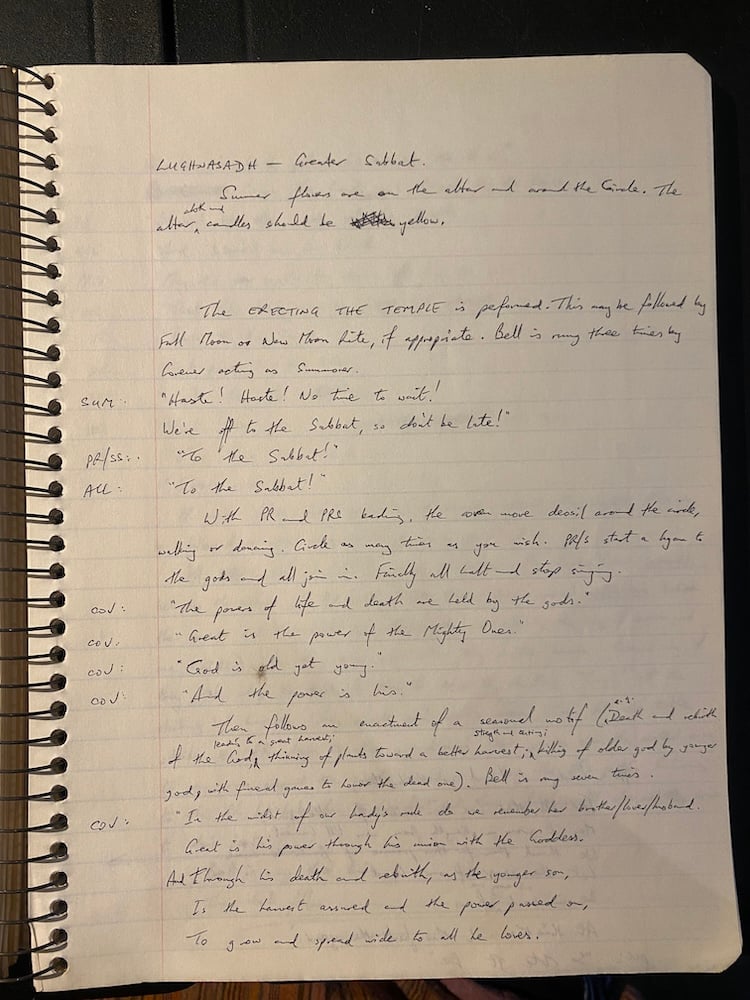
One of the most striking things about Buckland’s Complete upon publication was its sheer size, not necessarily in word count but in dimensions. Most Witchcraft-related books that Llewellyn published in that era were considerably smaller. Scott Cunningham’s books were generally 6 by 9 inches, but Big Blue was a whopping 8 ½ by 11 inches! Even today, it’s often one of the largest books in terms of length and width in the libraries of a great many Witches! The proposed size of the book concerned Llewellyn so much that they inquired with the book buyers for mall chains such as B. Dalton and Walden Books whether the book was going to be too big for the sellers’ shelves!(10)
And those test questions! While some people working at Llewellyn clearly didn’t like their inclusion in the book, a list of “questions to ponder” at the end of every chapter in Witchcraft books is now commonplace. While the queries in other Witchcraft books often come across as less clinical than Buckland’s end-of-chapter “examination questions,” they are basically the same thing. Every Witchcraft book that urges the reader to “keep a journal while working through this book” owes at least a small tip of the cap to Buckland.
Excerpted from the book High Priest: Raymond Buckland the Father of American Witchcraft by Jason Mankey and published by Llewellyn Worldwide. Release date May 8, 2025 and available at smart bookstores everywhere. copyright 2025 Jason Mankey
NOTES
1. Raymond Buckland, Buckland’s Complete Book of Witchcraft, xiv.
2. Carl Weschcke, letter to Raymond Buckland, November 19, 1985.
3. Carl Weschcke, letter to Raymond Buckland, November 19, 1985.
4. Llewellyn Publishing Agreement with Ray Buckland, April 1, 1985.
5. Marion Zimmer Bradley, letter to Llewellyn Publications, August 24, 1986 (with a copy for Melita Denning and Osborne Phillips stapled to the letter).
6. Raymond Buckland, letter to Carl Weschcke, January 27, 1986.
7. Raymond Buckland, letter to Carl Weschcke, January 27, 1986.
8. Carl Weschcke, letter to Raymond Buckland, November 19, 1985.
9. Llewellyn internal memo, date unknown. The note reads, “An executive decision had been made by our fearless leader, Carl Llewellyn Weschcke, regarding Buckland’s new tome. It is to be called RAY BUCKLAND’S COMPLETE BOOK OF WITCHCRAFT.”
10. Carl Weschcke, Llewellyn internal memo, January 15, 1985.







